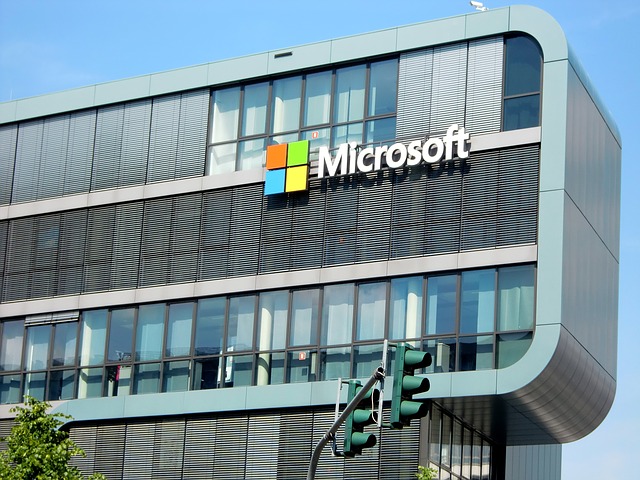Microsoft Cloud Outpaces Amazon

Last week, Microsoft (Nasdaq: MSFT) reported its fiscal first quarter results that surpassed market expectations for the fourth consecutive time. The company continues to deliver tremendous growth within the cloud segment. In fact, its performance helped Microsoft become the second biggest stock after Apple, stripping Amazon of the title.
Microsoft’s Financials
Microsoft’s Q1 revenues grew 19% over the year to $29.1 billion and were significantly ahead of the market’s forecast of $27.73 billion. EPS of $1.14 also beat the Street’s expectations by $0.18.
By segment, Productivity and Business Processes revenues grew 19% to $9.8 billion, ahead of the Street’s forecast of $9.4 billion. Revenues from the Intelligent Cloud grew 24% to $8.6 billion and from the Personal Computing, segment increased 15% to $10.7 billion. The market was looking for revenues of $10.13 billion from the segment.
Within the segments, Microsoft’s commercial cloud revenues grew 47% over the year to $8.5 billion. Azure sales reported an increase of 76% over the year. Growth has slowed down from 89% reported a quarter ago, and 90% reported a year ago. Analysts are not too concerned about the slowing rate because the larger base is making the comparative growth look lower. It also saw strong growth in its internet-based computing segment with sales of Office 365 and Dynamic 365 growing 36% and 51%, respectively.
For the second quarter, Microsoft expects revenues of $31.9-$32.7 billion, compared with the market’s forecast of $32.35 billion. Analysts expect Q2 EPS of $1.08.
Microsoft’s Cloud Growth
The market has been pleased with Microsoft’s performance in the Cloud. According to a report by Cloud Security Alliance, Amazon’s market share for its AWS has slipped to 41.5% this year, compared with more than 60% share that it held at the end of 2017. During the same period, Microsoft’s Azure’s share has steadily climbed to 29.4%.
Microsoft continues to add features to Azure to drive this growth. During the last quarter, it added almost 100 new capabilities to the platform with focus on existing workloads like security and new workloads like Internet of Things and Edge AI. It helped it add customers like Volkswagen, Anheuser-Busch InBev, and Mastercard to its cloud portfolio.
Some new features added during the quarter include the release of Azure Confidential Computing that makes Azure the first cloud to provide a secure platform for protecting the confidentiality and the integrity of data while in use. To help companies leverage the IoT segment, Azure Sphere is its end-to-end solution for securing microcontroller-powered devices. The service is broadly available and seeing strong customer interest. It also released Azure Digital Twins, a new service that models relationships and interactions across people, places, and devices.
It is also investing in making Azure a better offering for enterprise data. Azure ML is building on its existing data services including SQL Database, Cosmos DB, Data Warehouse, and Data Lake and using AI tools to unlock insights. Microsoft is hopeful that these solutions will help data scientists build and train AI models faster and then deploy them through the cloud or to the Edge.
I would like to know from the users how they rank Microsoft’s cloud offerings over Amazon’s?
Microsoft’s stock is currently trading at $103.85 with a market capitalization of $797.2 billion. It had climbed to an all-time high of $116.18 in September this year. The stock was trading at a 52-week low of $80.70 in November last year.



